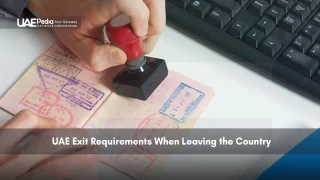UAE Entry Permit rules help people enter the Emirates. Did you know some visas last two months, while others last six months? The UAE has different rules for tourists, business people, and those moving there. Knowing these rules is key to entering smoothly. Navigating UAE immigration policies opens doors to incredible opportunities.
The UAE has many entry permits for different needs and times. Tourist permits for Dubai or Sharjah cost AED 350 to AED 400 for 30 days. Long-term permits for Abu Dhabi or other places cost AED 800 to AED 1,000 for 90 days.
Business travelers to Ajman or Fujairah can get short-term permits for 14 days at AED 200 to AED 250. Or, they can choose a 30-day permit for AED 400 to AED 500.
For a long-term stay, Residence Entry Permits are good. They last 60 days and can turn into a residence visa. They cost AED 500 to AED 1,100. This is great for moving to Ras Al Khaimah or Umm Al-Quwain. GCC citizens don’t need these permits to enter the UAE.
To apply for a UAE Entry Permit, you need a valid passport copy, a photo, and a form. You might need more documents based on your permit. The UAE Government says to check your passport, give correct info, apply early, and track your application. This makes the process easier.
Understanding UAE Entry Permit Basics
The United Arab Emirates has many entry permits for various reasons. These permits are the first step for foreigners to enter and live in the UAE.
What is a UAE Entry Permit
A UAE entry permit is an electronic document. It lets you enter the country temporarily. It’s needed for immigration and is different from a visa.
This permit must be changed to a residence or work visa before it expires.
Validity Periods and Grace Periods
Entry permits in the UAE have different lengths. Most last 60 days with a 10-day grace period for more time. Work permits need a passport good for at least 6 months.
Tourist permits can be single or multi-entry. Some are good for up to 5 years.
Differences Between Entry Permits and Visas
Entry permits and visas have different roles in UAE immigration. Permits let you in first, while visas allow you to stay longer. Here’s a comparison:
| Entry Permit | Visa |
|---|---|
| Temporary authorization | Long-term stay approval |
| Valid for 60 days typically | Can be valid for years (e.g., Golden Visa) |
| First step in immigration process | Grants residency or work rights |
| Requires conversion to visa | Can be renewed without new entry permit |
Knowing the difference between entry permits and visas is key. The UAE’s immigration system can be complex. Make sure to check the entry documentation UAE needs for your visit.
UAE Entry Permit Types and Categories
The United Arab Emirates offers many entry permits. These are for visitors and those who might move there. The country makes it easy for people from all over to come.
Tourist and Visit Permits
Tourist permits are available for 30, 60, or 90 days. They cost between 100 to 500 AED. You can stay longer by paying about 600 AED for an extra 30 days.
There are also transit visas. A 48-hour visa is free. A 96-hour visa costs 50 AED.
Business and Work Permits
The UAE’s economy draws professionals from everywhere. To get a work permit, you need certain documents. The Green Visa is for skilled workers and freelancers earning at least 15,000 AED monthly.
The Golden Visa is for the wealthy. It offers up to 10 years of residency with extra benefits.
Green Visa applicants must provide attested salary certificates showing consistent 15,000 AED monthly income for 6 months prior Ref.: “Ministry of Human Resources (2023). Green Visa Financial Documentation Requirements.”
Medical Treatment Permits
The UAE’s healthcare is top-notch. To get a medical permit, you need medical reports and letters from UAE health centers. The application fee is 100 AED.
The financial guarantee varies from 1,000 to 2,000 AED. This depends on how many trips you plan.
Educational and Student Permits
The UAE’s education is growing fast. Foreign students can get student visas for one year. These can be renewed every year.
These permits need certificates from schools. The UAE lets residents sponsor children up to 25 for family visas.



















